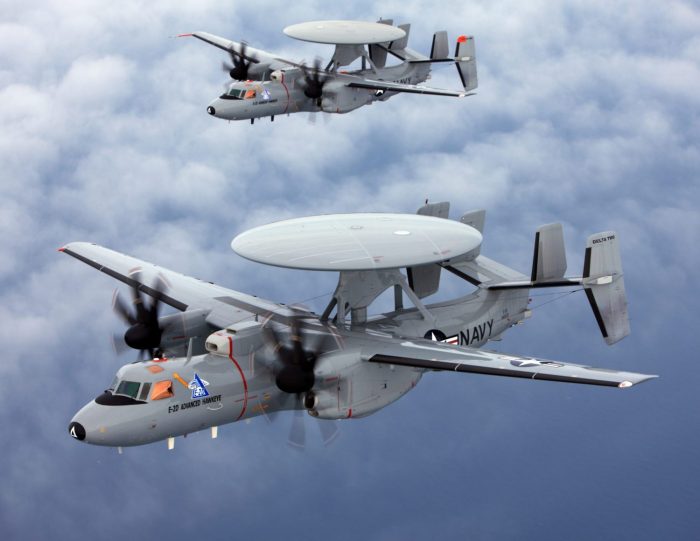The US Navy wants drone-control features on its E-2D Advanced Hawkeye early-warning aircraft. The service has awarded a contract to aerospace giant Northrop Grumman to carry out the necessary modifications on the aircraft.
The contract will include modifications of the E-2D’s mission computer and displays software to obtain the ability to control UAVs.
Developed in the late 1950s and early 1960s by Northrop Grumman, the E-2 Hawkeye is an all-weather, carrier-capable tactical airborne early warning (AEW) aircraft.
The E-2D AWAC in particular, carries AN/APY-9, a disc-shaped rotating radar dome, on its back that is used for early detection and tracking of aircraft and cruise missiles.
The Hawkeye has friend or foe identification capabilities, electronic support measures, and sensors for target identification.
The experiment for flying E-2D along with UAVs was announced on March 17. Earlier, the US Navy said it wanted to move some command-and-control activities of future carrier-based drones, off-ship through manned-unmanned teaming technologies.

The Boeing MQ-25A Stingray in-flight refueling tanker is also part of the plan. Vice Admiral James Kilby, deputy chief of naval operations for warfighting requirements and capabilities, said, “There is going to be a control center on the carrier for our unmanned air vehicles,
“But, ultimately, in the future, let’s say there’s a fueling area for a strike [aircraft] or some other mission area, it’d be great if a manned pilot saw the weather and we could divert and move that [UAV] and not have to go to the carrier to do that control.”
The US Navy has plans for the MQ-25A tanker so that it can extend the reach of the Navy’s fifth-generation Lockheed Martin F-35C stealth fighter jets.
The advanced fighter jets currently have an unrefuelled range of about 1,200nm. The US Navy’s experiment can significantly increase their range.
Follow EurAsian Times on Google News




